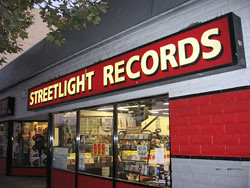Archive
Thanks, Dave: An Open Letter to Dave Brubeck
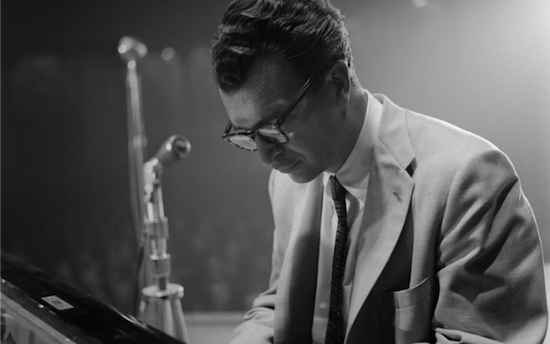
by Hans Schroeder
A day short of 92 years. That’s how long you were with us on this planet, Dave. And in those 92 years, you contributed immeasurably to what is now a rich and vibrant culture of intellect and progress.
As a young man, you rose to the patriotic duty asked of you by your country. While military service may not have been a job you volunteered for, it was a job you accepted as did so many thousands of other US citizens during those years of potentially dire consequences. And it was while you were serving that you found the inspiration you needed to give us your greatest achievement. I sometimes wonder what music would be like today had you not heard those Turkish soldiers improvising together in 15/16 and 9/8 time.
Time Out has become a staple, not only for jazz, but for music as a whole. Few artists have been able to present a challenging new idea and have it be so widely accepted and beloved. More often than not, progressive artists receive all their praise and acclaim posthumously, while the critics that were their contemporaries attack their art with scorn and disapproval. You were able to break new ground, and did so in a way that inspired musicians and listeners the world over. Not many composers have written a jazz tune that becomes a national phenomenon.
“Blue Rondo A La Turk” is a brilliant piece, as is “Kathy’s Waltz,” and Paul Desmond’s “Take Five.” Time Out rightfully holds its place atop a podium of seminal jazz records alongside the likes of Kind of Blue and Somethin’ Else. You created a wondrous marriage of art, entertainment, and intellect that has provided generation after generation with intrigue and joy.
It’s not only your contributions to creativity that has made your time on earth such a gift. You also made brilliant philanthropic efforts to emphasize the value of education. Jazz is very much a self-sustaining society. We take young people who are willing and eager, and we teach them about jazz. We teach them about jazz history, and the importance of remembering our nation’s roots. We teach them about compositional theory so new generations of writers can provide us with pleasure and innovation. We share our knowledge of improvisation so young musicians can partake in the moving and other-worldly experience that is spontaneous collaboration. And we then fade to the distance as we watch the people we’ve taught and trained pay the collective knowledge forward to the next generation.
You founded the Brubeck Institute, a highly prestigious jazz school that has helped shape some of the most brilliant of minds into what they are today. Through selfless dedication, you realized that jazz was bigger than what you could create alone, and offered the rewards of your success so future musicians could belong to that same echelon of elite theorists and musicians. By placing such immense value in education, you are one of the people who have lifted jazz to the high platform of art and academia that it deservedly sits on.
You gave us joy, and entertainment. You gave us progress, and inspiration. You gave us knowledge, experience, and passion. And you gave us all this with grace, charm, and nobility. You asked for no praise, and turned that which you did receive into a stunning momentum shared by creators and consumers alike.
While your departure is certainly a sad one, you’ve left behind a vast legacy that will be celebrated until civilization no longer walks the earth.
So thank you, Dave. Thank you for your imagination, and for your brilliance. Thank you for your devotion, and thank you for your work.
Although I’m writing this with the knowledge that you will never have the chance to read it, I take comfort in knowing that you felt the appreciation that numerous generations have kept for you.
Sincerely,
A fan
BeBop First Friday In-Store Concert: A Photo ReCap
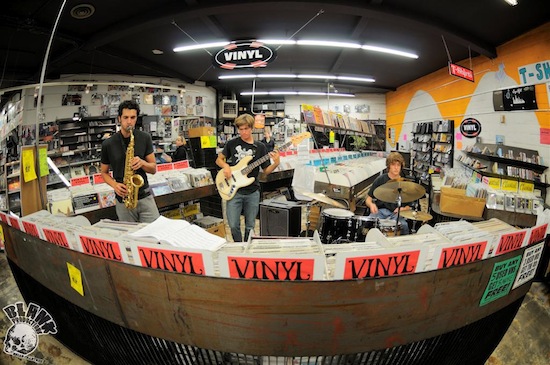
Huge thanks to the local rising jazz stars of BeBop who, again, wowed us with their style, funkiness, knowledge of the jazz canon and technique.
Photos by Brian Crabtree


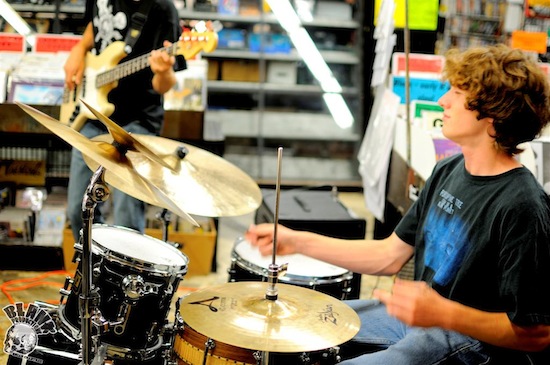


San Jose Jazz Summer Fest ReCap

A giant thank you to everyone who came by the Streetlight Records booth at the San Jose Jazz Summer Fest. It was a great weekend packed with music, art, food and drink. We had autograph signings with fast-rising Southern fiddler Amanda Shaw and jazz icons Terence Blanchard and Boney James, saw a bunch of familiar faces, made some new friends and got to represent our store. If you were there, you were sure to have heard more music than you can shake a trumpet at. If you weren’t, put it on the schedule for next year. Taking over downtown San Jose, the Summer Fest is a great way to connect with new and old friends, hear a wide variety of top-notch music and celebrate the richness of Bay Area culture.
Check out the lineup of this year’s festival at SanJoseJazz.org

See you next year!
I Missed the Regina Carter Show. Tell Me Everything.

by Cat Johnson
Last week, I left town for four days. In that time, I managed to miss both Fred Eaglesmith and Regina Carter. (That’s what I get for leaving Santa Cruz, I guess.) Fred, I’ve already seen a handful of times, but Regina is a new find for me. I’ve been filing her CDs for years, but was just recently turned on to her latest, entitled Reverse Thread. It’s a cross-genre, cross-cultural collection of songs based in African folk traditions, but, from that foundation, it takes off into uncharted territory. Featuring the kora, accordion, guitar, percussion, electric and acoustic bass and Carter’s shredding violin, it’s an easy, yet complex and textured listen. I have it filed in my collection alongside Ali Farka Toure, Toumani Diabate, Billy Bang, Virginia Rodrigues, Zakir Hussain, Abigail Washburn and the like; beautiful music that stokes my it’s-a-small-world fire.
I imagine that Carter’s show at the Kuumbwa was amazing, lovely, inspiring etc. I’d love to hear a recap of the night. Were you there? Tell me everything.
12 Important Yet Underrated or Underplayed Jazz Items

by Hans Schroeder
Last week, a listener-voted list of the 100 best jazz songs of all time was posted on Jazz24.org. Reading it as a life-long jazzophile (and admitted snob), I was immediately upset by the selection. Scrolling down the page, it looked more like a popularity contest than an objective decision. Were those really the best jazz songs of all time, chosen for values like historical importance, artistic merit, and musical progression, or was it just a smattering of the 100 most famous jazz songs? It felt incomplete, obvious, and undefended.
So, I’ve gone ahead and made my own list. Here are 12 artists, songs, and albums that I feel deserve special note, but are often omitted from standard lists due to their lack of notoriety. Yes, it’s highly subjective. And yes, there are countless more items that I could include. And yes, there is good, unique jazz out there that is wildly more obscure than this. If you would like to add to it, feel free to do so. But for what it’s worth, I think the following deserve just a little attention.
12. Miles Davis – Get Up With It
Believe it or not, Miles Davis is not a great musician because of his trumpet playing. In fact, Miles was a poor trumpet player. His intonation is laughable, his technique is sloppy, and his tone is weak. That’s not to say that he wasn’t one of the greatest musicians to have ever lived. He was. But it was his vision that made him so great. He had his finger on the pulse of what was always coming up next. Nearly every new step made in jazz was made with Miles’ foot.
When he stopped playing his horn, that didn’t mean he stopped his progress. Get Up With It is a fine example of how an artist can still paint with a different brush. The song “Rated X” has Miles playing the organ, backed by a haunting bass, and sporadic percussion that reminds the modern ear of late ’90s D&B records, but decades before that sound even existed. It isn’t easy to listen to, but it is easy to embrace as art.
..
11. Gil Evans – Out of the Cool
Miles Davis gets a lot of credit for other people’s work. It’s important to note that three of his greatest records (Miles Ahead, Sketches of Spain, Porgy & Bess) were the brain-child of genius arranger Gil Evans. Miles was the hand at the helm of these projects, but Gil Evans, through his direction and arrangements, was what made them possible. For more of Gil’s work, check out Out of the Cool. As the title suggests, it marks a departure for jazz as a whole, as Gil took his orchestra into a hipper direction.
..
10. Charles Tolliver – With Love
Charles Tolliver had to come back around, back to music that made sense. Back from the deep recesses of free jazz and experimentation that he threw himself into when he was playing with Jackie McLean in the ‘60s. But stubborn mules don’t come easy. When Tolliver released his 2007 big band record, With Love, he brought with him the aggressive sound he was so known for in his early recordings. An old man now, his tone is next to gone, but it’s his ideas that are important. His solos are hip and well planned, and his departures from the spotlight are welcome as his band takes up where he leaves off. The compositions are harsh, and jagged, but never jarring. An incredible wave of sound is constantly thrown over every surface of listening space the ear could possibly have. But it isn’t upsetting. Not a single jazz composer or arranger has written music with that much noise surrounding it, while making it not feel like noise, and instead making it feel hip.
9. Kenny Wheeler – “The Sweet Time Suite”
This is, in my opinion, the greatest jazz composition ever written. I can’t begin to describe how beautiful it is. Give it a listen. The music will speak for itself. You can find it on an album called Music for Large and Small Ensembles.
..
8. Paul Quinichette – On The Sunny Side
There isn’t much to be said about Quinichette’s role in the jazz world. He spent the bulk of his short career trying to copy Lester Young’s coveted, soulful, raspy tone. It’s said that of all the attempted impostors (and there were many), Quinichette came the closest to fully emulating Young’s gruff, gravely tenor style. He made little contribution, and stopped playing entirely in the late ‘50s to become an electrical worker. However, he did leave in his shallow wake one brilliant album. On The Sunny Side featured a larger band, complete with a horn section four strong. And everyone gets a solo. Normally, without clever arranging, this leads to a very boring 40 minutes of music. However, every soloist works extremely well with the rhythm section, keeping each chorus as fresh and original as the one before it. The excitement builds on every track, chorus after chorus, until finally everyone brings it back together, and recapitulates the melody with perfect dynamic contrast. It’s safe to say that Quinichette can be proud of his career simply because of this record.
..
7. Miles Davis – Workin’ With The Miles Davis Quintet
In addition to his tremendous skill as an innovator, one of Miles’ greatest virtues was the ability to assemble a band. He knew who had what sounds, and would combine them with musicians varying in degrees of differences and similarities. A great example of this is Workin’ With The Miles Davis Quintet. The album starts with a ballad entitled “It Never Entered My Mind.” While Miles’ playing on this first cut isn’t very strong, his rhythm section nails it. Red Garland’s piano playing is beautiful. Soft, earnest, and contemplative, he glides over the chord changes in perfect accompaniment to Miles’ muted solo. The record also has the first recording of “Four,” a song that any current jazz musician knows like the back of their hand. While it isn’t a very popular song outside the jazz world, it’s one of the most common played tunes in jam sessions, or even on street corners. The chord structure makes perfect sense from a far glance, making it ideal for an easy warm-up song. And the melody is catchy. Just a few listens will guarantee it a spot in your repertoire of songs you hum to yourself while you do the dishes.
Workin’ also has some of John Coltrane’s earliest recorded work. It’s interesting to hear him as such a young man, knowing where his sound would end up four years later when Giant Steps was released.
..
6. Dave Holland Big Band – Overtime
Bassist Dave Holland is wildly important in modern jazz. He’s been around for decades now, and has played with all the big names. He was Miles’ bassist at the very beginning of the fusion era, was a member of Anthony Braxton’s progressive art projects, and has ushered in numerous new sounds. He’s one of the guys who brought the hip back after the ‘80s.
Written for the Monterey Jazz Festival, Overtime contains “The Monterey Suite,” a dynamic step in new jazz. Everything about the piece is unique. The time signature, if not changing, is constantly unfamiliar. The chordal blocking and structure is foreign. But even with all the experimentation, each melody is interesting and playful, making it an artistic endeavor that is accessible to everyone
5. Horace Silver – The Stylings of Silver
Horace Silver’s heyday was during an era in jazz that defined the sound as many think of it today. Hard bop, while stimulating to many, is easy to listen to. Furthermore, it’s easy to play. It’s one of the few genres that a group of amateur musicians can sit down with, and with a real book in hand, play passable music for hours at a time. All you need is a melody and a set of theoretically sensible chord changes and you have a song.
Silver stands out in this genre for a very simple fact. He arranged. He took the structure, and added to it, writing backgrounds, alternate melodies, and specific instructions for his rhythm section. These traits are everywhere on The Stylings of Silver. Every tune, while standard in harmonic structure, has great arrangements for the rhythm section during melodies and solos. There’s not a boring moment on this album, and all Silver did was put in a little extra effort.
..
4. Charles Mingus – The Black Saint & The Sinner Lady
Far from underrated, The Black Saint & The Sinner Lady is held high by fans of Mingus as one of his greatest works. But it’s a concept. It can’t be deconstructed. Not a single song can stand alone without the others’ support. For this reason, it often is omitted from lists, so I’m throwing it in. It’s simply too good to be ignored. Once you’ve enjoyed the hits like “Moanin’,” “Haitian Fight Song” and “Pithecanthropus Erectus,” treat yourself and get a copy of The Black Saint…
3. George Russell – Jazz Workshop
George Russell is the definition of underrated. Underrated, underplayed, under-mentioned, under everything. Although his catalogue is small, what he was able to record in the early ‘50s was some of the most important jazz ever written. In 1953, he wrote a short theory pamphlet called The Lydian Chromatic Concept of Tonal Organization. In short, his idea was that by adding notes to dominant chords in fifths, and blocked out between two octaves, the tonal gravity of the chord opens up. These ideas caused a huge stir in the jazz world. Changing chord structures allowed players operating on an intellectual level to safely depart from be bop, and into the cool era. Art Farmer, Bill Evans, John Coltrane, and Miles Davis all cited The Lydian… as a seminal theoretical discovery.
While maintaining a sense of art and entertainment, Russell composed a few tunes around his own ideas. Jazz Workshop is a truly amazing record. The music is progressive and fun, and incredibly entertaining, but pulses with intellectual creativity. “Ye Hypocrite, Ye Beelzebub” is one of the hippest tunes ever recorded, tackled aggressively by an all-star band. Bill Evans was still fresh on the scene at the time of the session, but his chops were in top shape. Art Farmer’s technique is unquestionably stunning, and his solo fully embraces the ideas they were toying with. Although Russell is a fairly obscure figure, his influence is heard on just about every record made since his arrival.
..
2. Thelonious Monk Orchestra – At Town Hall
Monk’s got records. And records. And records. After being arrested for heroin possession, his cabaret card was revoked. This meant that he no longer was legally able to play in clubs that served alcohol, effectively putting an end to his gigging (and therefore, his income) for a while. In order to make money, he recorded whenever possible, wherever possible, with whomever possible, a habit he never got out of. As a result, his discography is gigantic. Solo records, live records, records with quintets featuring musicians that no one knew of then, and certainly won’t know of in years to come. Suffice it to say, there’s a lot of Monk to choose from.
Even with his vast catalogue, there isn’t much large band work. Big bands and orchestras aren’t cheap. Everyone needs to get paid, so writing for, and performing with large groups just wasn’t a smart financial decision. But an artist will create, and Monk, if nothing else, was an artist.
Thelonious Monk Orchestra At Town Hall is an amazing record. He has a fantastic band, playing arrangements of very unique tunes. Most noteworthy is “Friday the 13th” a single riff jam, backed by incredibly unique harmonic structure which is outlined by the small horn section. As the background plays, Donald Byrd screams the melody on top of everyone. It’s an incredibly exciting tune, and defines the album as a very unique orchestral effort.
..
1. The Music of Billy Strayhorn
Billy Strayhorn in an interesting figure in jazz. Like countless others, his name is obscured by those more famous than him. But what sets Strayhorn aside from his peers in obscurity is the fact that he was a prominent member of the mainstream jazz society. Between the 1940s to late 1960s he was Duke Ellington’s writing partner. He penned one of the most famous songs of all time, “Take the A-Train” as well as “Satin Doll,” “Lush Life”, and “Lotus Blossom.” Ellington’s famous come-back album, Ellington at Newport, featured an exciting three part suite, written just for the occasion by Strayhorn. It all at once intellectual, masculine, heartfelt, and wild. At times, it feels like a complete free-for-all, as every section blares seemingly uncontrolled, but it’s then brought back together in perfect synchronization.
Strayhorn lead a storied personal life. He had an abusive, drunken father and was constantly hidden from him by his mother who shuffled him about the Midwest from family member to family member. He lived as an openly gay black man during a time when brutal homophobia and racism were a widespread rash on our country’s skin. Despite being the main writing partner of the world’s most famous bandleader, he kept himself private. And it’s through his lesser-known compositions that we’re given the closest look into his personality.
Two of his best, “U.M.M.G. (Upper Manhattan Medical Group)” and “Blood Count,” were written from his hospital bed toward the end of his life. They feel close, personal, and private. Music written for himself, but free to be enjoyed by all. “U.M.M.G.” has been a favorite amongst musicians for years. Dozens of versions have been recorded, so there’s a lot to hear, but Joe Henderson’s interpretation from his album Lush Life is fantastic. It’s modern and progressive, while still maintaining the spirit of Strayhorn. “Blood Count” is featured on Ellington’s tribute album …And His Mother Called Him Bill, an emotional work for the orchestra as Ellington dealt with the passing of a friend. In listening, you can hear what Strayhorn felt as he knew that death would take him soon. He was looking at his life, his love, his passion, and accepting that he would soon have to let it go. An absolutely gorgeous composition, worthy of all the emotion it demands from its listeners.
One Hundred Quintessential Jazz Songs

Listeners of Seattle’s Jazz24 recently submitted their nominations for the 100 Quintessential Jazz Songs. Top vote-getting artists include Miles Davis, John Coltrane, Benny Goodman, Charles Mingus, Duke Ellington and more. What do you think of the listeners choices? Did your favorites make the list?
One enthusiastic listener even made a video playlist so you can check out the artists behind the songs. Here’s the link:
If you just want to skip to the chase, here’s the tune that was voted #1
The Tragic Tale of Chet Baker

by Cat Johnson
Flipping through the Chet Baker section is always a bit of a bummer. The arc of his story is a tragic one, indeed. He went from being an over-the-top-handsome, young up-and-comer in the jazz world, to being a heroin addict who lost the ability to play his trumpet and died on the street.
The bright side of the story is that he left us with some magnificent music. One of the giants of cool jazz, Baker epitomized the laid-back, subdued style that epitomized West Coast jazz. His work with the Gerry Mulligan quartet is held up as some of the finest interplay between trumpet and sax ever recorded. His vocal renderings of such classics as “My Funny Valentine” and “I’ve Got a Feeling” sealed his fate as a multi-faceted musical gem.
The dark side of the story goes like this: Baker picked up a heroin habit early on. Over the course of his life (and rapidly declining career) he pawned his instruments for drug money; was imprisoned and kicked out of countries for drug charges; he served time for prescription fraud; he was beaten and had his teeth knocked out, resulting in an inability to play the trumpet (he was later fitted for dentures and mounted a somewhat successful, though short-lived comeback); and he was found dead outside his hotel, on an Amsterdam street at 3am with wounds to his head and heroin and cocaine in his system. He was 59.
Sunday Morning Music
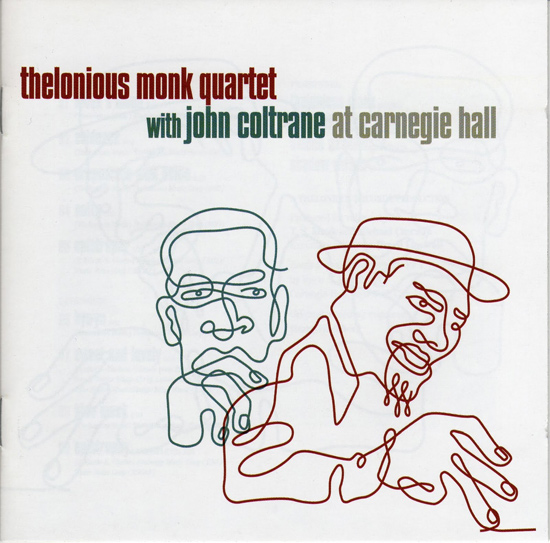
by Cat Johnson
As the story goes, in 2005 while thumbing through tapes in the Library of Congress, Larry Appelbaum discovered some reels labeled “Carnegie Hall Jazz 1957″ with “T. Monk” handwritten on the back.
Finding lost Thelonious Monk recordings would make any day great, but the heart-racing moment came with the realization that the saxophonist on the tapes was the magnificent John Coltrane.
The rumored existence of these recordings had been a lighthouse of hope for library digger and Jazz professor Lewis Porter for nearly ten years, and he was able to confirm that yes, these were the lost Monk tapes from the Carnegie Hall run, and yes, that was John Coltrane on sax.
The Blue Note release of these recovered recordings was, understandably, a big deal in the jazz world, and if you want a proper jazz critic’s review, there are plenty out there. I’ll just say, as a fan and admirer of both Monk and Coltrane, that this is an amazing find. I try to imagine what the audience felt and thought listening to these future legends play together. Were they aware that they were in the presence of raw genius? What music is being played today that will have us saying “I was there?”
If I could see any show, from any time, this might be the one.
This article originally appeared on House of Cat.
Dizzy Gillespie: October 21, 1917 – January 6, 1993
Nicely played, Google.
Dizzy Gillespie Quotes:
“I don’t care much about music. What I like is sounds.”
“It’s taken me all my life to learn what not to play.”
“They’re not particular about whether you’re playing a flatted fifth or a ruptured 129th as long as they can dance to it.”
“Men have died for this music. You can’t get more serious than that.”

